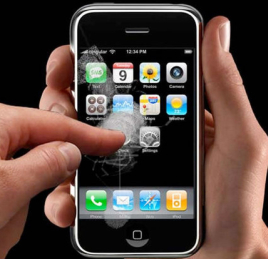As smart mobile devices take their hold on the general population and make shopping easier through apps, mobile commerce is on track to grow 300% faster than traditional eCommerce by 2016.
Coupofy.com, a leading database of online coupon codes has observed mCommerce’s growth firsthand. In 2014 there were 560 million mobile coupon users who redeemed 16 billion coupons, this is expected to rise to 1.05 billion users and 31 billion coupons by 2019!
Data researched by Coupofy suggests that between 2013 and 2016 mobile shopping will have grown 42% compared to regular eCommerce’s 13%, and mobile users will spend a total of $600 billion in 2018, a 400% growth from 2014’s $200 billion.
Denmark, Norway, Sweden, China, and Spain are leading this growth, each seeing a rise of around 50% in mobile shopping popularity between the same time period. Emerging markets like India and Taiwan saw a 60% increase between 2012 and 2014 as mobile devices became more prevalent among their populations.
There has also been a parallel increase in overall mobile internet revenue streams, with more consumer apps being paid for, more businesses adopting mobile based work environments, and subsequently more advertisers and investors spending their budgets on targeting mobile users.
It’s no surprise that leading traditional eCommerce site Amazon.com is leading the charge in mCommerce, with 110% growth in 2014, earning revenues of $16.8 million. They are followed by the likes of Apple ($14 billion), Chinese store Jingdong Mall ($5.8 billion), Google Play ($4.4 billion), and QVC ($1.86 billion).
With increasing mobile device use among lower income consumers in Asia, their huge populations are set to account for almost of half of mobile spending by 2018. Some 68% of all Chinese online consumers say they have already shopped with a smart phone.
The most lucrative mCommerce market is Computer/TV/Multimedia, managing an average order value of $212. Apple Users spend on average $15 more than Android users per transaction, while Tablet users spend $36 more than their smartphone cousins. In the battle of the sexes men spend $24 more than women, but women spend the majority of their money on clothing & accessories while men prefer sports products.
Proving that user friendliness is a key driver of mCommerce growth, mobile users prefer shopping apps to their device’s browser.
This exciting new data can be seen in full with the following Coupofy infographic: http://www.coupofy.com/blog/mobile-commerce-growing-300-faster-than-ecommerce-infographic


 It also revealed that 61 percent of the participants said that they had used those mobile apps within the month prior to having participated in the survey. A smaller number of the respondents, 26 percent, said that they used their retail apps on a regular basis – that is, 7 or more times per month.
It also revealed that 61 percent of the participants said that they had used those mobile apps within the month prior to having participated in the survey. A smaller number of the respondents, 26 percent, said that they used their retail apps on a regular basis – that is, 7 or more times per month.